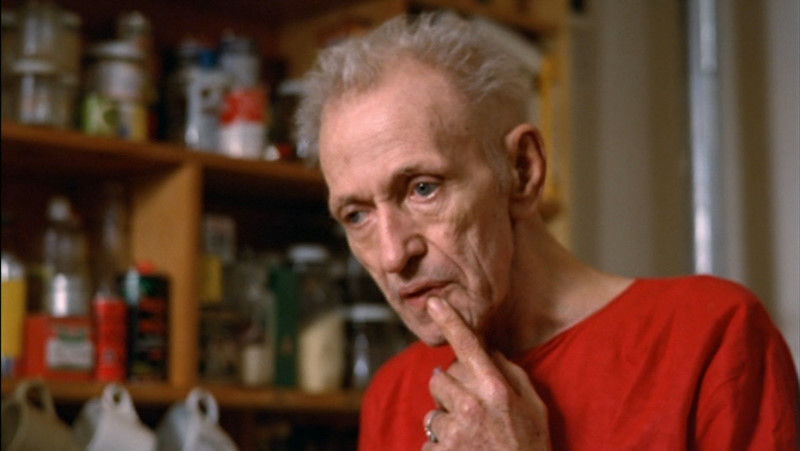Cahiers had always approached American cinema from a detached European
perspective. In this regard two of Daney’s most important critiques from his early
Eighties period are the ones on Wim Wenders’ Lightning Over Water and Samuel Fuller’s The Big Red One. These
were important films and critiques for bridging the classic Cahiers jaune era with the modern cinema
of the Eighties. Daney encouraged this external contemplation of Hollywood and
this is why his favorite American films also implicitly participated in this.
Other examples include the films of John Cassavetes, who made his home movies next door to the Majors in
California, and Barbara Loden and her only film Wanda.
There was always
a side film malade to Daney
(Truffaut’s term to discuss Hitchcock’s Marnie).
For Daney it is these sick films that
are more representative of cinema globally and Daney personally. The
documentary by Wenders met en place Nicholas
Ray’s frail and dying body which for Daney offers a surrogate for the status of
the Classical Studio era. Lightning Over
Water is seen as a film about the politique
des auteurs, where a director’s failure is seen as the more personal work
than the success, which for Daney has now become corrupted as a marketing tool.
The new European
director in this period that best addressed these concerns for Daney was Wim
Wenders. There was Lightning Over Water
but also before this The American Friend where Wenders would cast Fuller and
Dennis Hopper. There is a Godardian, Le
Mépris quality to these films in their reflexivity and criticality. Daney
in his critique of Lightning Over Water
highlights its perversity which is similar to Ray’s own cinema, “The subjects
of Ray’s films is less revolt than the impossibility of revolt.” Daney’s
description of the relationship between Ray and Wenders in Lightning Over Water can equally be read as a commentary on the
relationship between different generations at Cahiers. “It’s about this
alliance that is forced due to a filiation, where this filiation is experienced
like an alliance. This is the cinema of Nicholas Ray. But also, this
relationship, experienced at the
beginning of the Eighties, becomes a way to recount the history of cinema.”
Serge Le Péron
would pick up on Daney’s analysis in his critique of Wenders’s Hammett. Le Péron writes, “For another time it is a fiction about
filiation that Wenders is confronted with.” To make the film, Wenders had to
learn the old ways of studio filmmaking and the film, which is produced by
Francis Ford Coppola, can be divided, according to Le Péron, with its story that belongs to its producer and
its images that belong to its
director. This emphasis on the director, framing and mise en scène leads Le Péron to concluding on its modernity, “For
his tenth film, with its ancient narrative and retro production, Wenders’
preoccupations are never that far away from those of Godard and Antonioni.”
Samuel Fuller’s The Big Red One, similar to George Cukor’s Rich
and Famous (which was also
featured in this period), is a late testimony film by one of the last old studio
directors. Even though Daney laments that the four-hour version will never get
properly released (which is no longer the case) he still describes Fuller’s The Big Red One as, “It’s the best film
by Samuel Fuller, and nonetheless the most personal and ambitious.” Fuller’s mise
en scène
and morality remained intact and there’s a serenity to the film that comes from
old age. Daney continues,
If Fuller was
adopted at Cahiers like a modern
filmmaker it’s because, more than any other American, he’s a filmmaker who is
obsessed with the idea of the contemporary…
Even when he was telling stories that were set in the past there was always the
sentiment of ‘the first time’. This was new to the cinema. It was as if nobody
had filmed before him… This came from how Fuller was both a wartime journalist and also a mad journalist.
Daney is
building upon Godard’s earlier legacy as a film critic and filmmaker. He’s
creating an explicit filiation with the author of one of the most famous Cahiers critiques which is that of
Godard on Bitter Victory (“Nicholas Ray is cinema…”) and of Godard
the director of Pierrot le Fou where he would cast Fuller in a small
role to discuss his wartime experiences and cinema.


No comments:
Post a Comment